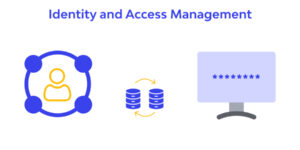
Managing Identity and Access Management is always a challenge and it becomes difficult when the IAM roles and responsibilities are not satisfied. You should understand the role IAM plays if you want to make a successful career in this domain. As an Identity and Access Management Specialist, it is vital to ensure everyone can access sensitive information without any hurdles and without compromising security.
So, if you are planning to build a career in this domain, then this post is for you. Here, we will discuss the crucial roles and responsibilities of an identity and access management specialist in a simplified manner. So, without any further ado, let’s get started…
First off, let’s understand who Identity and Access Management Specialists are. Here we go…
Who Is an Identity and Access Management Specialist?
An Identity and Access Management Specialist is a professional responsible for managing users’ accounts and maintaining data integrity. They determine who is permitted to access an organization’s digital resources. To become a qualified IAM, the candidate should have experience in access management, security assessment and risk management.
Additionally, they should have critical thinking and team collaboration capabilities. Their expertise and guidance to organizations assist in gathering crucial identity and access management requirements to design and implement access controls, ensuring robust cybersecurity.
Let’s now take a look at the roles and responsibilities that Identity and Access Management Specialists perform. Here we go…
Roles and Responsibilities Performed by an Identity and Access Management Specialist
The following is a list of various roles and responsibilities every IAM specialist handles in the process. Read on!
➢ Manage User Groups
The primary role of an Identity and Access Management specialist is to create and manage users’ groups. This way, they simplify access management and streamline IAM policies for users’ control.
➢ Administer User Accounts and Access Permissions
An IAM (Identity and Access Management) specialist creates, modifies, manages and deactivates user identities in the organization’s identity management system. In addition, they control access permissions related to data, applications and systems. Consequently, organizations enhance their adherence to government regulations and industry-specific standards.
Additionally, the IAM specialist guarantees complete security against both internal and external data breaches by maintaining full control over access permissions.
➢ Team Collaboration for Greater Control of User Access
IAM specialists work closely with the organization’s IAM team to ensure that the right people have access to resources. Their effective team collaboration minimizes the time, effort and costs associated with the manual management of network access. In this manner, they serve as a specialist for IAM members, aiming to boost the business’s operational efficiency and strengthen security.
➢ Design and Implement Security Protocols
Using a risk-based approach, expert Identity and Access Management analysts design and implement various safety measures, including role-based access controls, multi-factor authentication, conditional data access, etc. Besides this, they monitor these key measures with metrics to improve and enhance their efficiency.
➢ Regular Management of the IAM System
Another role that IAM analysts play is to regularly manage the IAM system. The Identity and Access Management (IAM) system is a centralized repository for controlling users’ access to critical information. An IAM specialist regularly manages the IAM system to assign roles and levels of access to individuals within the organization. This way, they effectively protect the system from cyber criminals.
➢ Track Users’ Activity
The Identity and Access Management Specialist monitors users’ activities within an IAM system. They take effective measures to detect unusual or suspicious behavior or patterns. Doing so allows them to protect sensitive information from cybercriminals.
➢ Identify and Troubleshoot IAM Issues
IAM specialists use the visual editor and policy summaries to diagnose and fix the issues while managing the identity and access management system. In addition, they make necessary adjustments to resolve problems like unauthorized login or access denied.
Also, they use identity repositories like LDAP, Active Directory, etc., to troubleshoot complex IAM issues. With their efforts, the IAM system grants users the required permissions and improves operational efficiency.
➢ Enforce Data Protection Policies
Identity and Access Management Analysts enforce data protection policies and standards regarding identity and access management. They ensure everyone, including stakeholders, business analysts, management and customers, adhere to regulations.
➢ Active Participation in IAM Projects

As an IAM analyst, the accountable person must actively participate in IAM projects and initiatives. They should foster a culture of research and development within the team to design and innovate new safety products and services. They must integrate advanced systems, implement security measures, modify permission policies and enhance access control.
➢ Maintain an Updated Documentation
Identity and Access Management analysts maintain a comprehensive documentation of the identity and access management system. They regularly update it to highlight key areas for improvement. In this manner, they adhere to regulations with greater efficiency, resulting in seamless audits.
➢ Seamless Coordination with Organization
They seamlessly coordinate with business analysts, stakeholders, application team members, the cybersecurity team, the IT operational team and internal customers to comprehend the access requirements. This way, they design, develop and implement safe and secure IAM solutions.
➢ Generate Real-Time IAM Reports
IAM analysts generate real-time reports detailing users’ activities like user provisioning actions, authentication requests, permission changes, etc. They provide these analytical reports to the senior management and business unit heads. Generating these reports is crucial for streamlining audits and security assessments. This constitutes a crucial element of their strategic risk management program.
➢ Review Access Control Reports
Another responsibility that IAM analysts handle is to regularly participate in IAM audits. They review access control reports to detect potential cyber threats. Their early intervention helps the IAM team adopt a proactive strategy to prevent the risk of bugs, errors, or cybercrime.
➢ Develop and Oversee a Disaster Recovery Plan
Another crucial role and responsibility of IAM analyst is to develop and oversee disaster recovery policies and standards. They ensure data backup in emergencies without any hassle. However, they make sure the plan aligns with business management goals.
➢ Adapt IAM to Changing Business Requirements
They understand market trends, business needs and customers’ expectations. Based on their in-depth analysis, they make the IAM scalable according to evolving business requirements. They align access controls with changing trends, secure the organization’s sensitive information from cyberthreats .
➢ Conduct Training Sessions
Another duty that Identity and Access Management specialists perform is to organize training sessions and workshops for new users. They train them on updated IAM policies to ensure seamless handling of information. Additionally, they ensure that stakeholders are informed about safe information access, thereby eliminating any risk of malicious activities.
They usually train them about multi-factor authentication, role-based access controls, phishing awareness, strong password management and how to report suspicious login activities to the IAM team. Moreover, they train them to comply with regulations and standards while accessing information.
➢ Stay Updated with the Current Trends
Last but not least, they stay updated with the current trends. Staying updated with current trends is crucial for an IAM specialist to ensure the security of IAM systems. Proficient IAM analysts strive to ensure that their IAM system remains state-of-the-art and secure. They do not leave any stone unturned when exploring new information and implementing it in their system.
Wrapping It Up
So, these are the top 17 roles and responsibilities that Identity and Access Management Specialists perform. An efficient IAM analyst should be able to promote effective team collaboration to design and implement strategic and secure IAM frameworks. They play a critical role in safeguarding organizational data and systems.
These professionals protect sensitive information from unauthorized access by implementing robust access controls, managing user identities and ensuring compliance with security protocols. All in all, IAM Specialists play a crucial role in addressing new challenges. They not only ensure that organizations meet regulatory standards but also preserve operational resilience and trust.






